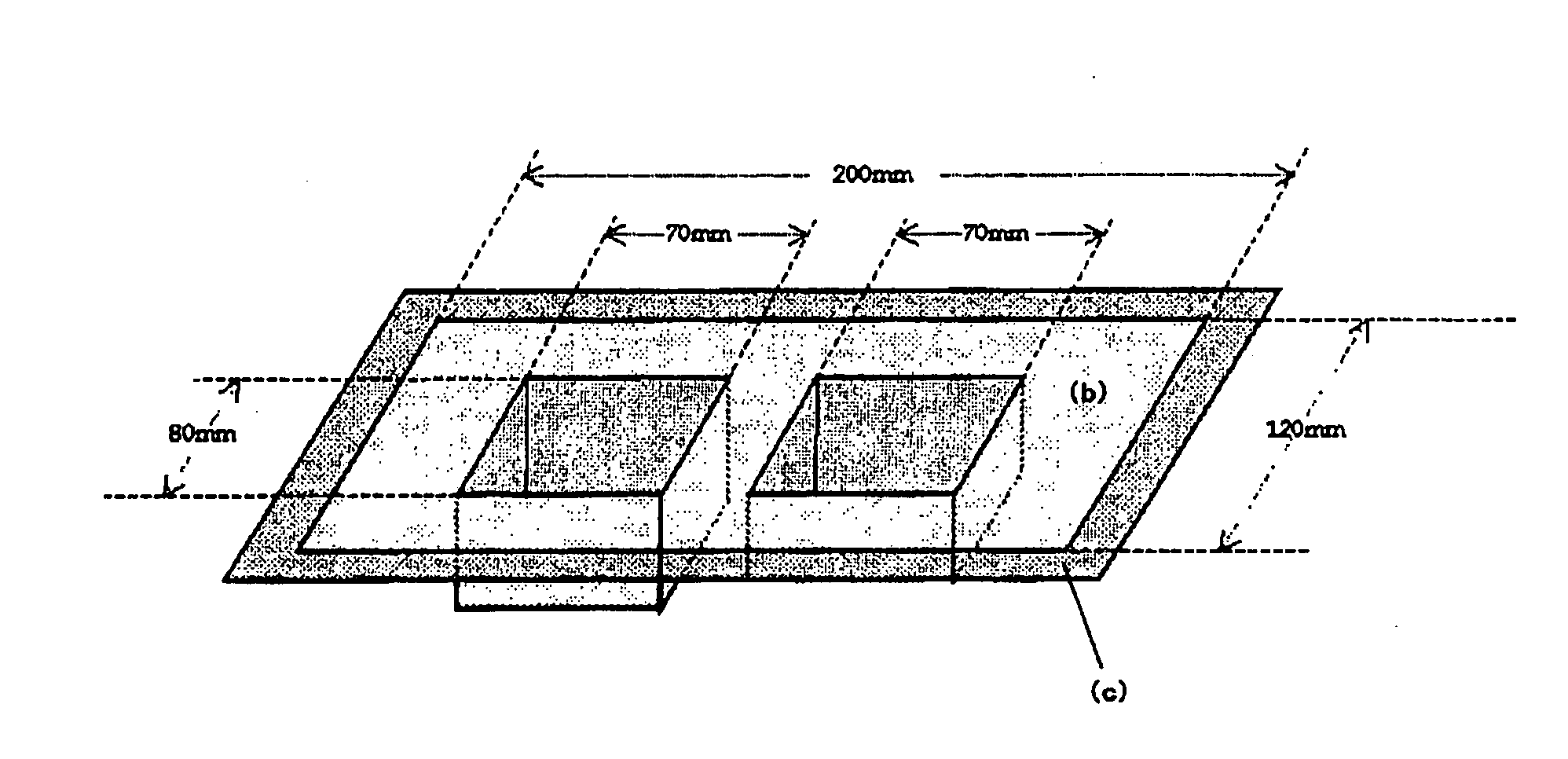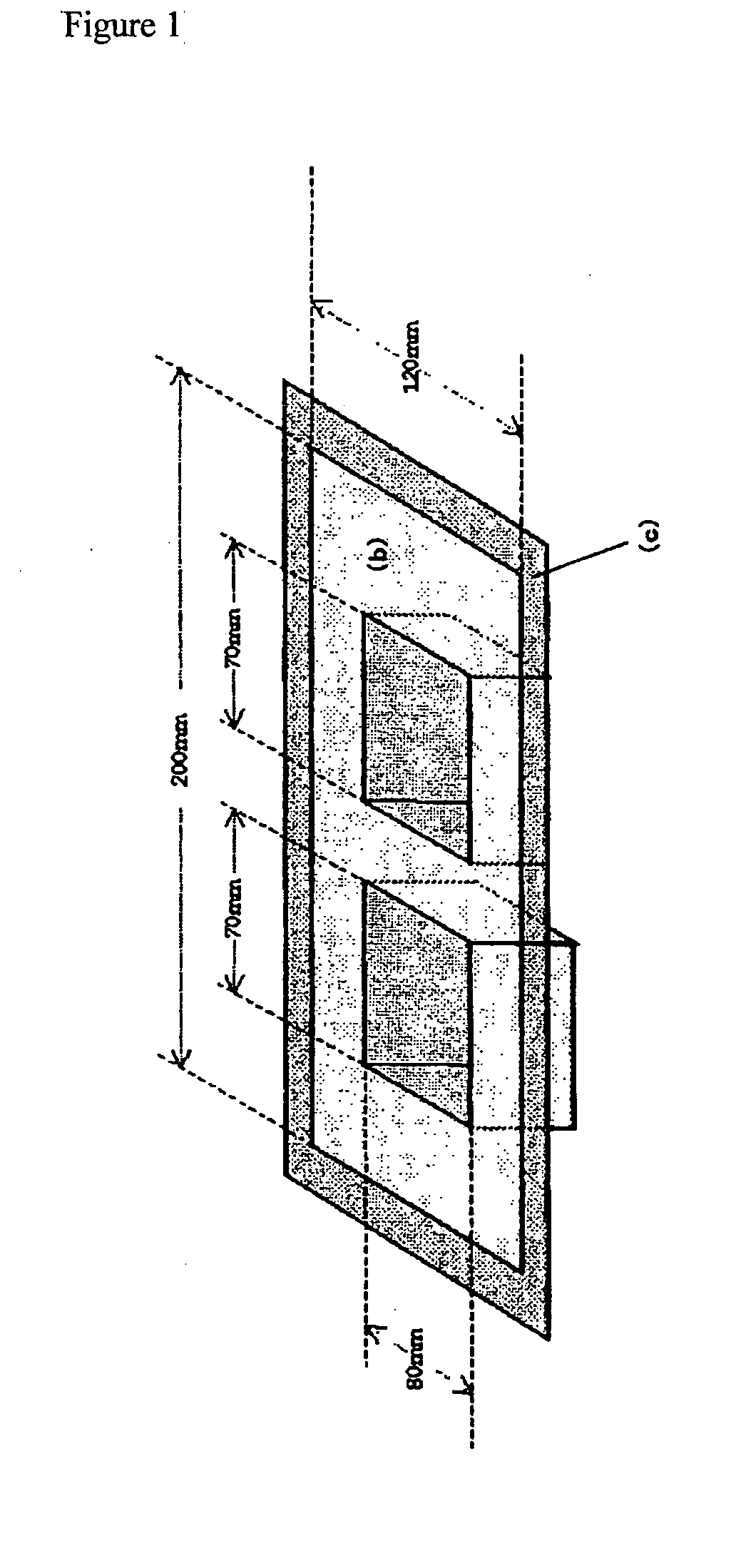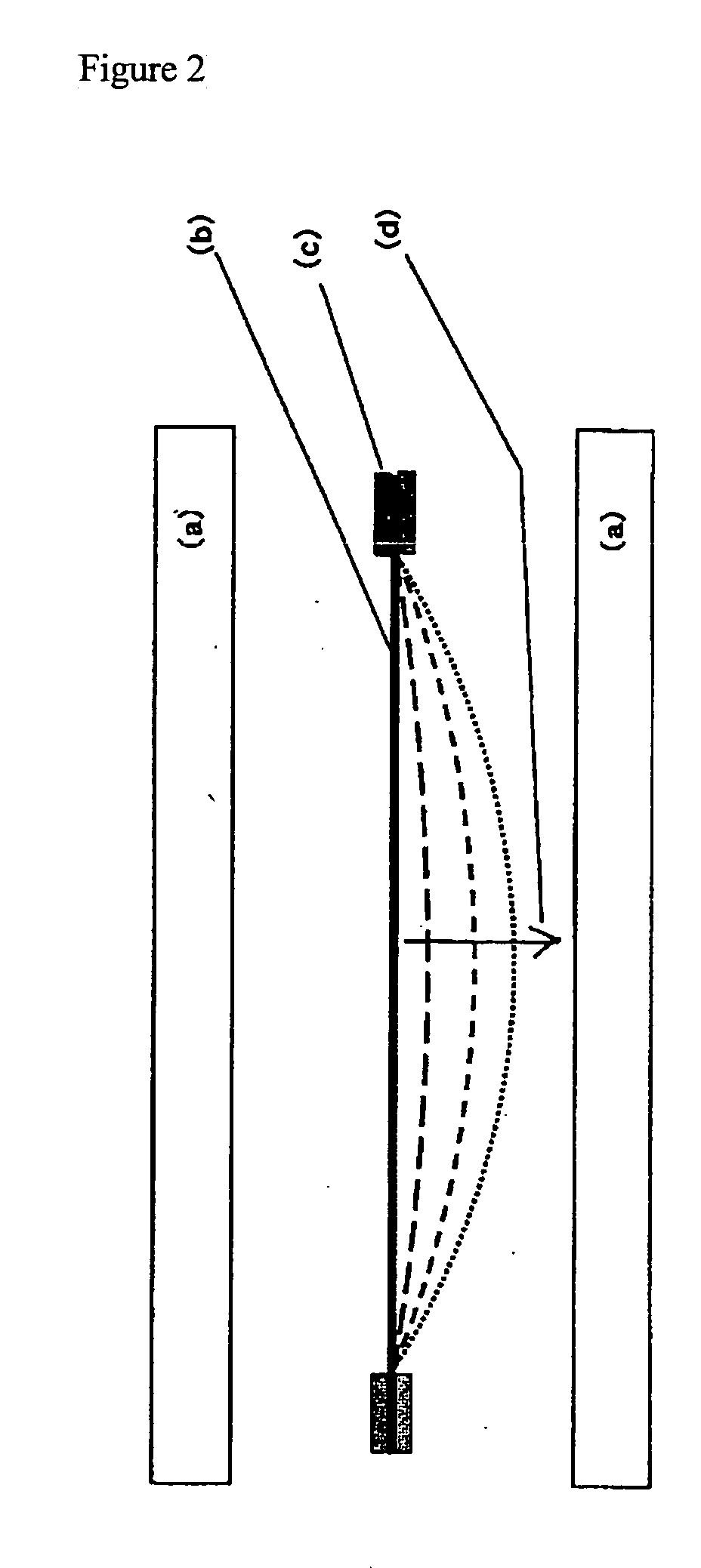Resin Composition Suitable For Sheet Formation
a composition and composition technology, applied in the field of resin composition, can solve the problems of insufficient melt viscosity of sheets with a composition having a common melt viscosity, inability to conduct vacuum forming, and inability to generate wrinkles in shaped pieces, etc., and achieve the effect of higher r
- Summary
- Abstract
- Description
- Claims
- Application Information
AI Technical Summary
Benefits of technology
Problems solved by technology
Method used
Image
Examples
examples 5 to 7 (
Present Invention), Examples 9 to 12 (Present Invention), and Example 8 (Comparative Example)
[0191]The extruder used in Example 1 was set as with Example 1 except that the second feed opening on the downstream side was blocked, and the first feed opening on the downstream side was used as the feed opening on the downstream side. From the feed opening on the upstream side and the feed opening on the downstream side were fed the following materials in the proportions shown in Table 2.
Feed Opening on the Upstream Side: PPE, SEBS, and MAH
Feed Opening on the Downstream Side:
[0192]a polyamide 66 [PA66 having ηr=2.79, (concentration of end amino groups [NH2]) / (concentration of end carboxyl groups [COOH]])]=0.69), melting point=263° C.] (hereafter, abbreviated simply as PA66a); a polyamide 66 [PA66 having ηr=5.13, (concentration of end amino groups [NH2]) / (concentration of end carboxyl groups [COOH]])]=0.41), melting point=262° C.] (hereafter, abbreviated simply as PA66b); a polyamide 12 [P...
examples 13 , 14 and 16 (
Examples 13, 14 and 16 (Present Invention), and Example 15 (Comparative Example)
[0199]There was used ZSK40SC (manufactured by Coperion Werner & Pfleiderer GmbH & Co. KG, Germany) that has one feed opening on the upstream side and two feed openings on the downstream side, and a ratio (L / D) of 48. The number of barrels is 12 (L / D per a barrel is 4), and there were placed the feed opening on the upstream side at the 1st barrel; the first feed opening on the downstream side at the 6th barrel; the second feed opening on the downstream side at the 8th barrel; and vent ports for removing volatile constituent by reduced pressure suction at the 5th barrel and 10th barrel respectively. The maximum cylinder temperature was set at 320° C. From the feed opening on the upstream side, the first feed opening on the downstream side and the second feed opening on the downstream side were fed the following materials in the proportions shown in Table 3.
Feed Opening on the Upstream Side: PPE, SEBS, and ...
example 17 (
Present Invention)
[0208]This example is shown as an example using a high discharge rate capable extruder (Mega compounder type extruder), which is intended to represent actual manufacturing.
[0209]There was used an extruder ZSK40MC (manufactured by Coperion Werner & Pfleiderer GmbH & Co. KG, Germany) that has one feed opening on the upstream side and two feed openings on the downstream side, and an L / D of 48. The number of barrels is 12 (L / D per a barrel is 4), and there were placed the feed opening on the upstream side at the 1st barrel; the first feed opening on the downstream side at the 6th barrel; the second feed opening on the downstream side at the 8th barrel; and vent ports for removing volatile constituent by reduced pressure suction at the 5th barrel and 10th barrel respectively. The maximum cylinder temperature was set at 320° C. From the feed opening on the upstream side, the first feed opening on the downstream side and the second feed opening on the downstream side were...
PUM
| Property | Measurement | Unit |
|---|---|---|
| mean particle diameter | aaaaa | aaaaa |
| melting point | aaaaa | aaaaa |
| melting point | aaaaa | aaaaa |
Abstract
Description
Claims
Application Information
 Login to View More
Login to View More - R&D
- Intellectual Property
- Life Sciences
- Materials
- Tech Scout
- Unparalleled Data Quality
- Higher Quality Content
- 60% Fewer Hallucinations
Browse by: Latest US Patents, China's latest patents, Technical Efficacy Thesaurus, Application Domain, Technology Topic, Popular Technical Reports.
© 2025 PatSnap. All rights reserved.Legal|Privacy policy|Modern Slavery Act Transparency Statement|Sitemap|About US| Contact US: help@patsnap.com



